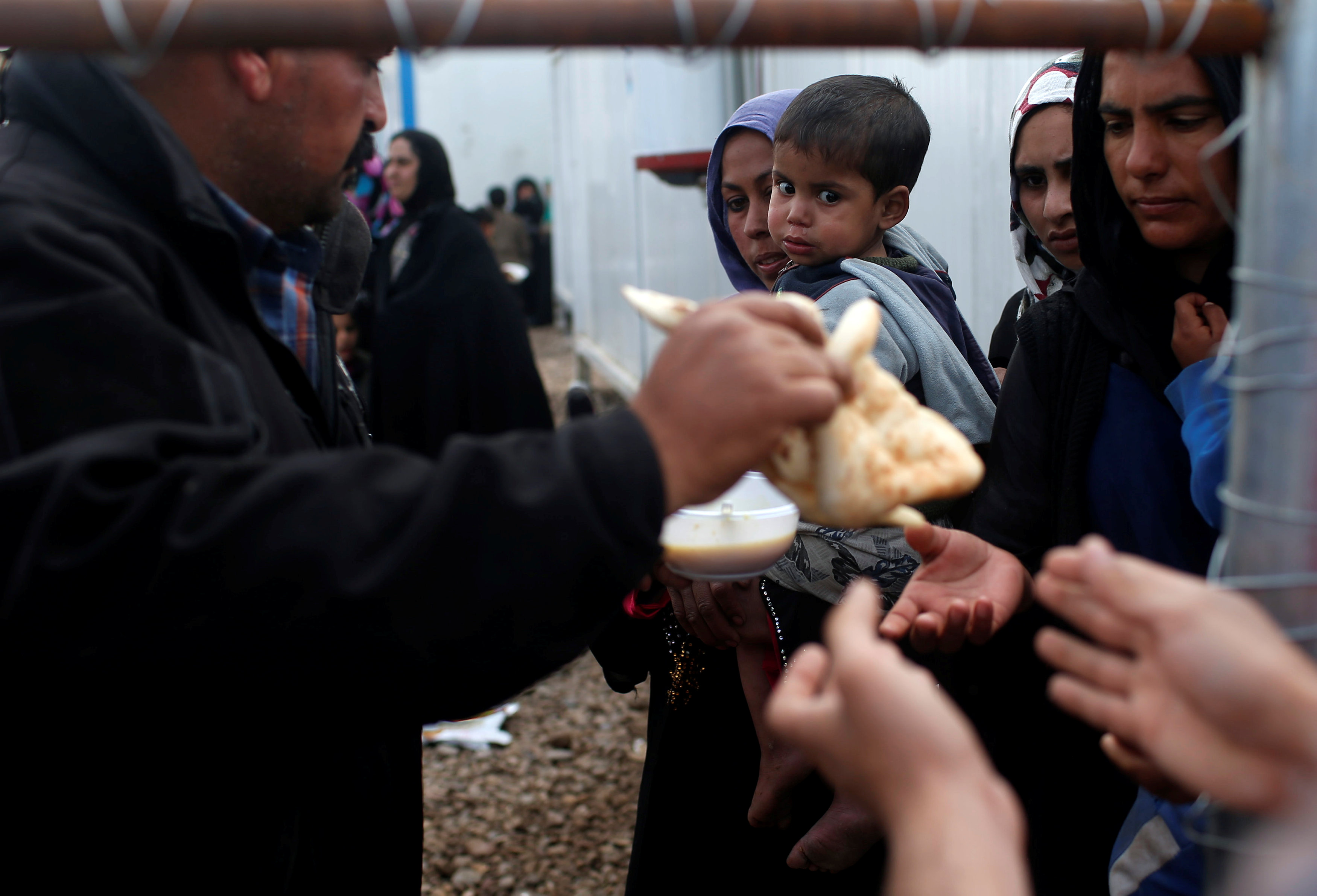
By Ulf Laessing
MOSUL, Iraq (Reuters) – Sitting in a wheelchair and wearing sunglasses, pensioner Abdelraziq Abdelkarim enjoys the afternoon sun outside his house in Mosul after a day of rain. He does not flinch when a mortar opens fire just around the corner.
His home is on the busiest frontline in the northern Iraqi city just 200 m (yards) from Islamic State positions. Outside his house, Federal Police units are firing at the militants.
Government forces have been evacuating civilians as they fight to seize Mosul, once the hardline Sunni militant group’s main urban stronghold in Iraq and now the scene of a six-month-old battle.
But some families refuse to go, shrugging off the danger of a mortar fired two blocks away or a counter-attack from the militants who move around at night. Gunfire rings out constantly between Federal Police and militants holed up in abandoned shops and apartments.
“I don’t want to go. I’ve lived all my life in this house,” said 72-year Abdelkarim, a former studio photographer, sitting next to his handicapped son and a grandchild.
They share a two-floor house in a narrow street with five people from two other families. Military Humvees and mortar launchers are just parked outside.
Almost 300,000 people have fled Mosul since the government offensive to recapture the city began in October, according to the United Nations.

Displaced Iraqis who had fled their homes wait to get food supplies before entering at Hammam al-Alil camp south of Mosul, Iraq April 3, 2017. REUTERS/Suhaib Salem
But Abdelkarim and his friends dread going to one of the crowded camps where aid agencies sometimes place two families in one tent for lack of space. Others stay with relatives in cramped homes.
They had stocked up food, water and petrol for a power generator when the military campaign began. There is no food store at the frontline but soldiers sometimes share rations or a family member goes to one of the food distribution centers set up by the military, they say.
“We are maybe three or four families left. The rest are gone,” said Abdullah Ahmed, a 42-year old engineer staying with Abdelkarim. “Right across out door 50 people stayed in one house but they’ve fled.”
DEATH AROUND CORNER
Their short alley shows the military’s challenges in dislodging Islamic State fighters hiding in the Old City — navigating is difficult in the labyrinth of narrow, often covered alleys offering perfect hideouts for snipers or to stage ambushes.
U.S. officials estimated about 2,000 fighters were still in Mosul in February at the start of the second phase of the campaign, to dislodge them from western sector.
Iraqi forces have been edging closer to al-Nuri Mosque — some 300 meters away — where Islamic State leader Abu Bakr al-Baghdadi proclaimed a caliphate nearly three years ago across territory controlled by the group in both Iraq and Syria.
But the front has hardly moved in past two weeks as Humvees or tanks are of no use in the Old City.
“See our street is about one-and-half meters wide,” said Ahmed, whose TV satellite shop was closed by Islamic State as watching TV channels was banned under its austere version of Sunni Islam.
“Near the mosque the streets only half as wide as this. There are some 40 to 50 small houses clustered around it,” he said, pointing in the direction of the mosque. “It’s very difficult to move there.”
When Federal Police opened fire with a machine gun perched on the top floor of a house through a hole broken into a wall, Islamic State fired back within two minutes with accuracy.
“There are snipers here,” a federal policeman said.
There is another reason why the friends want to avoid going to camps. IS fighters seized the husband of one of their sisters two before the government forces arrived.
“I fear they killed him because he was a policeman,” said his 30-year-old wife Dhikrayat Muwafiq, weeping in the kitchen where she was preparing rice and beans.
“I don’t want to go until we know where he is. I need to stay,” she said.
(Editing by Angus MacSwan)








